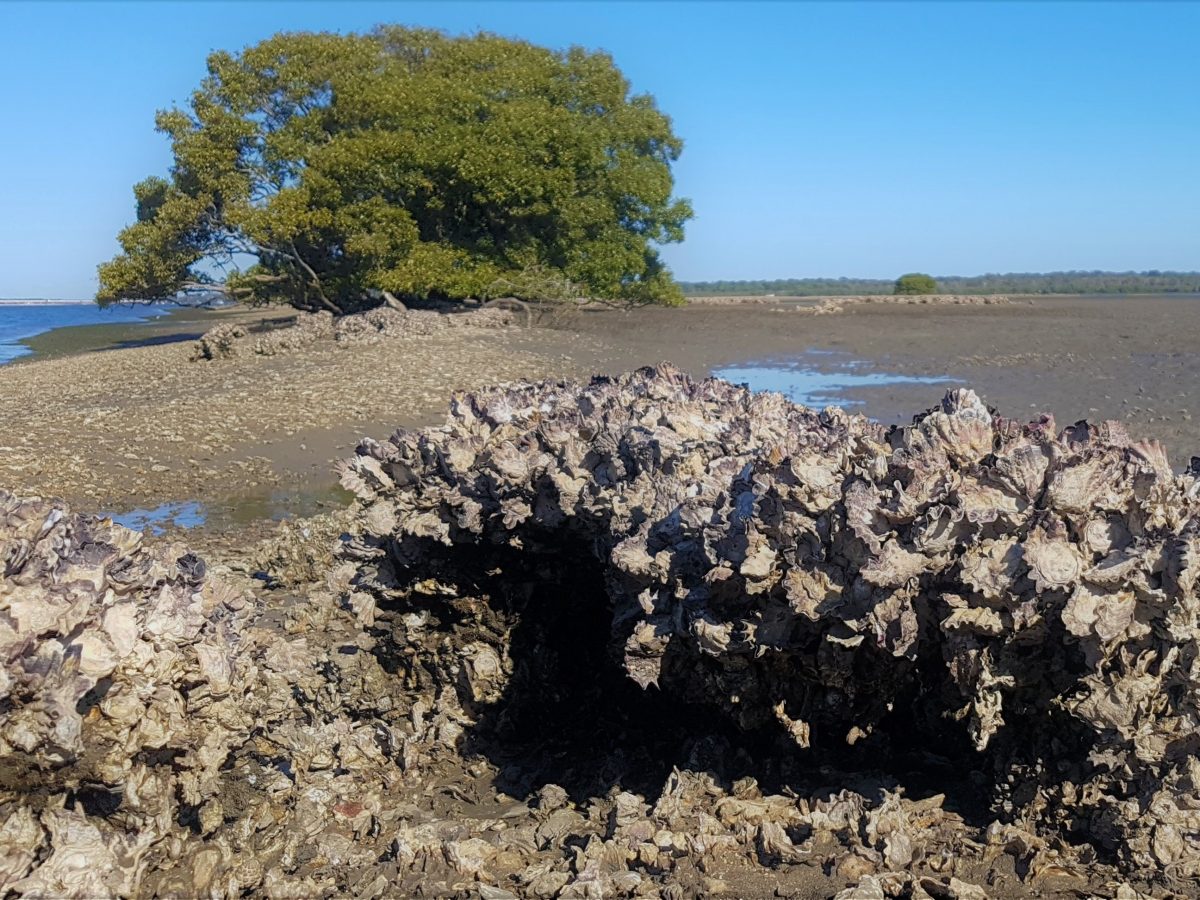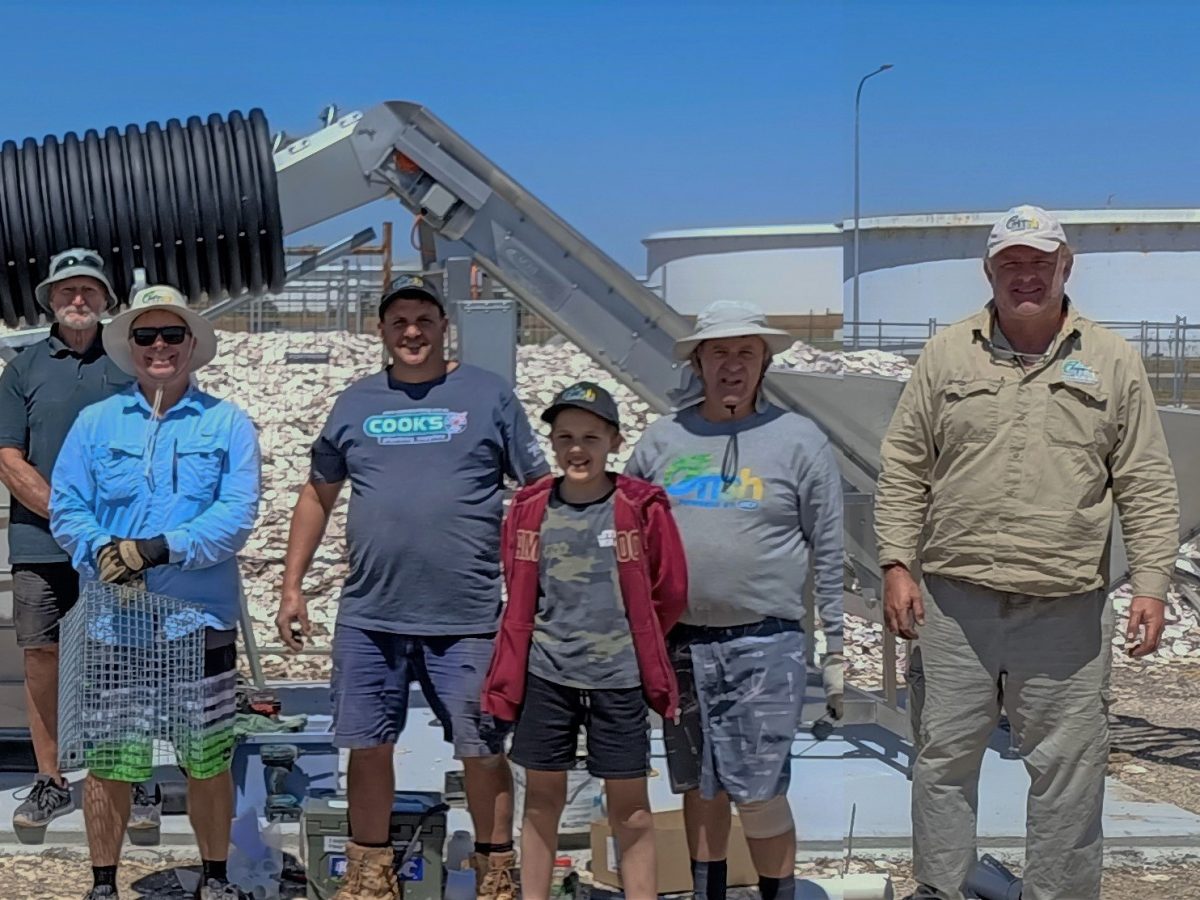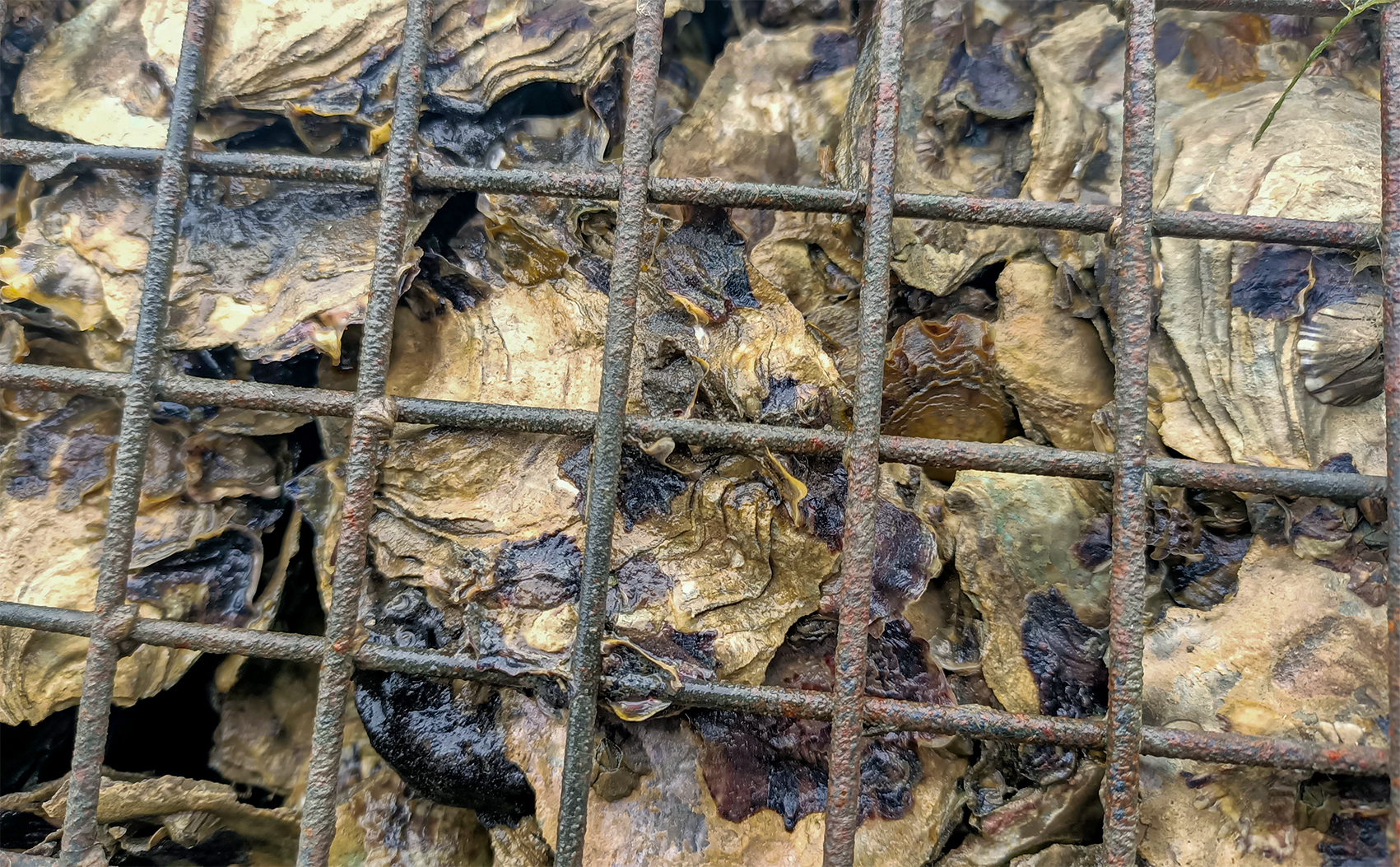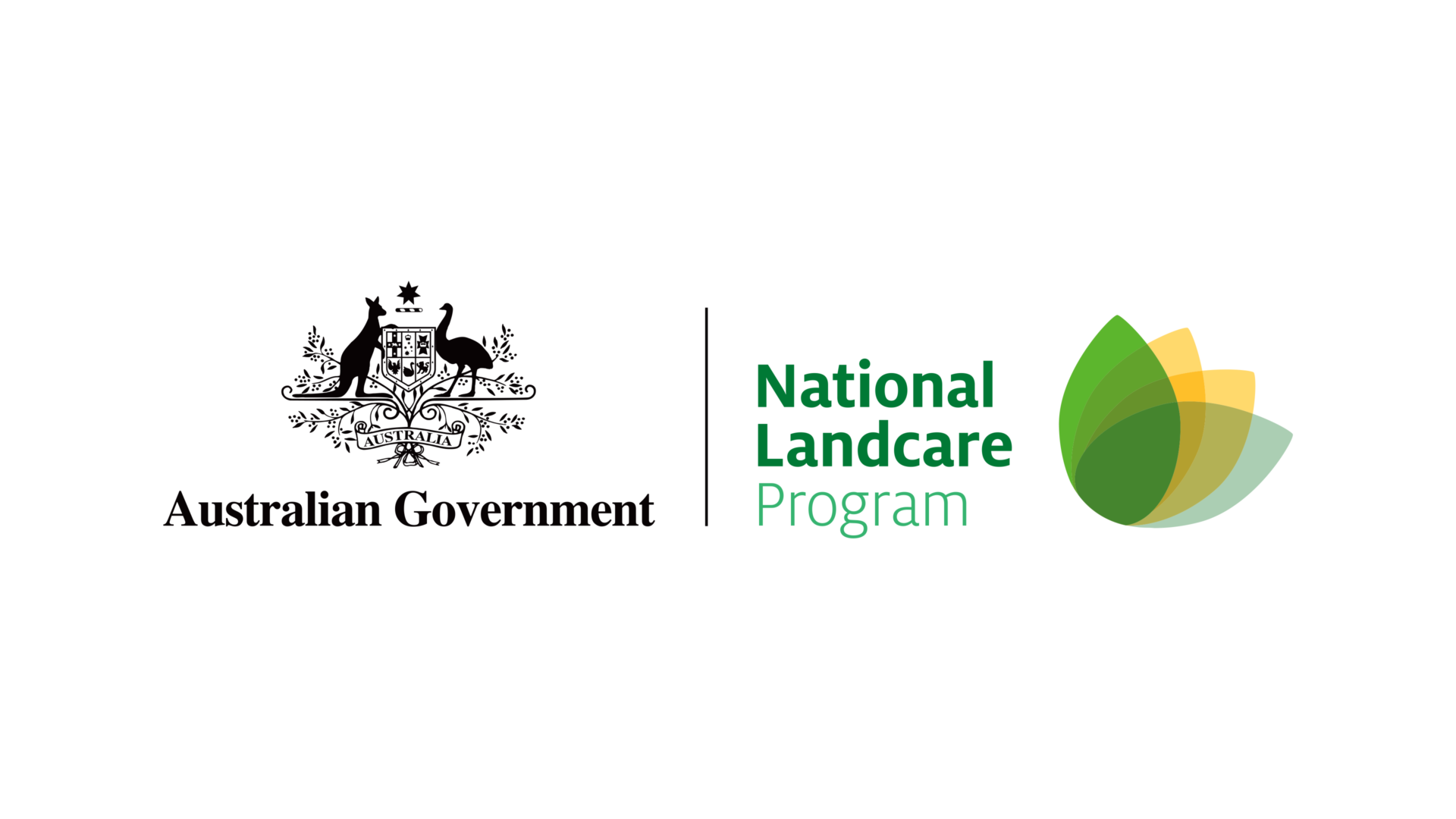Introducing the ROB 400

Robbie Porter has been hanging around various bars and restaurants for the past three years, but not for the reasons you may think…
Rather than indulging in life’s luxuries, Robbie has been furiously designing and crafting the ROB 400, the affectionate term for his Robust Oyster Baskets at 400mm high. Through his collaboration with local Queensland bars and restaurants, Robbie has diverted tonnes of oyster shells from landfill in the ultimate shellfish recycling project. Check out Robbie showing off the fruits of his labours with Belinda, Shell and Chris from Shucks Bar in Manly QLD!
With each ROB on trial providing shelter for over 10,000 baby oysters. Every oyster that survives to adulthood can filter 180L of water each! That is a lot of clean water per ROB 400.
Why Shellfish?
In many of Australian waters, including Moreton Bay, shellfish reefs are functionally extinct. High levels of sediment, diseases and predation by fish and other predators make it hard for shellfish reefs to reestablish.
Oysters require a complex and vertical structure to grow on, this complexity creates nooks and crannies for baby oysters (spat) to settle and grow on, with the vertical shape lifting them up off the seafloor, away from potential predators.
Shellfish reefs grow similarly to coral reefs, with baby oysters attaching to the outside of adult shells and the inside surface of dead shells. When these baby oysters grow to full size, the next generation attaches to them creating an ever-growing shellfish reef. Our challenge was to create clumps of living shells from our recycled oyster shells to get the complex and vertical structure ready for baby oysters to grow out into reefs without leaving behind undesirable materials like plastics.
Growth habits
On commercial oyster leases, rock oysters are placed in enclosed baskets so they can feed and grow into adults. These baskets need to be regularly checked and the numbers thinned out as the oysters grow to fill the space in the baskets. Sometimes these baskets are not checked in time and the living oysters to grow together and create a clumped mass. This clumping makes the oysters misshapen and undesirable for human consumption but perfect for oyster reefs.
We decided to take advantage of this natural tendency and created the Robust Oyster Basket affectionately known as a ROB. The ROB is made from degradable steel mesh that is filled with recycled oyster shell. The mesh takes about 2 years to degrade which gives the oysters and other shellfish time to clump together before completely rusting out, leaving only oyster shells, and living shellfish.
Shellfish accretion and survival
ROBs utilise a triangular prism shape that is designed to maximize water flow through the recycled shells and encourage shellfish accretion. Due to the high rugosity of the oyster shells, shellfish have a large amount of surface area to attach to, including many niches and overhangs.
The ROB is designed to mimic the few existing shellfish reefs that still exist in eastern Moreton Bay. These reefs are formed into symbiotic clumps of living and dead shellfish.
Typically, in Moreton Bay Rock Oysters inhabit the upper parts of each structure, Pearl Oysters are in the middle and Hairy Mussels are on the lower areas.
Exploiting Natural Clumping tendencies
The gabion (ROB) has been designed to exploit the habit of Rock Oysters to clump.
In commercial aquaculture, oysters that have been left too long in their bags, clump together and form a single mass. These lumps are similar to remnant shellfish reefs in eastern Moreton Bay.
Once the wire on the ROB has degraded, the reef module only contains recycled oyster shell, living shellfish and the other organisms that have inhabited them.
Community involvement
Large scale shellfish reef restoration projects are essential, but they typically are managed by large organisational bodies and do not give community members a sense of ownership. We believe that by having the community involved in the project it will help establish a strong sense of stewardship.
ROBs can be deployed by hand with no machinery, meaning low cost and the ability for maximum community participation. ROB 400’s triangular prism design and inherent strength mean that deployment can be as simple as throwing into place. With the triangular prism design ensuring it always lands the right way up. They can be quickly and easily deployed in any depth of water and divers are not required to manufacture structures on the seafloor, saving time and money and increasing safety.
Efficiency
The ROB modules can be placed on the seafloor in grid patterns, mimicking natural shellfish bomboras. Placed 1 to 2 meters apart, the ROBs are effectively interconnected. Fish and invertebrates can use these interconnected areas as underwater wildlife corridors.
ROB’s are very quick and cheap to manufacture, with many community groups already making them for us with a total material cost around $7 per unit
Biodegradable
The preferred outer material to make the ROBs is galvanised mild steel.
The gauge of the wire can be adapted to suit conditions and manipulated so they biodegrade at the desired rate.
Thicker gauge wire degrades slower while thinner gauge wire degrades quicker. Other existing designs, including coir bags, are constrained by their biodegrading rate.
Strength and durability
ROB’s are tougher than most other designs and can take a knock from boats or anchors.
Due to their combined strength and lightweight design ROB’s do not pose anchoring risk, any structures that become hooked can easily be removed and thrown back.
The hydrodynamic shape means they remain in place, with their rigidity preventing a flattening of the shape over time, which is a common issue for similar structures made from chicken wire or coir bags.
Scalable and site-specific
The size of the ROBs can vary to suit specific site needs. Remnant Shellfish Reef clumps tend to be around 250mm high, the height has been designed to maximize shellfish survival without causing navigational hazards.
ROB’s stack well together and can be made into larger blocks or living revetment walls. When deployed in a stacked form the ROBS can be brickworked together to add to the strength.
Our Partners
None of this work would be possible without the support from our partners.
This project is supported by Healthy Land & Water through funding from the Australian Government’s National Landcare Program.











